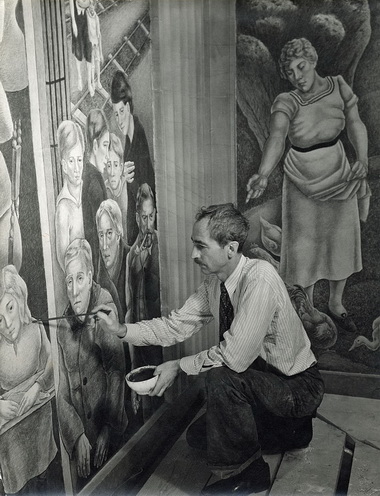 |
George Biddle | |
| Birth Date: January 24, 1885 |
||
| Death Date: November 6, 1973 Artist Gallery |
||
| Born in Philadelphia in 1885 to a socially prominent upper-class family, George Biddle became known as a realist painter. He attended Groton, where he and Franklin Delano Roosevelt were friends in school and then both went on to Harvard for law degrees.
In 1908, after Biddle passed his bar exam, he decided to pursue his interest in art. He first enrolled at the Pennsylvania Academy of Fine Art and then, in 1911, traveled to Munich and Paris to further his studies. When World War I broke out, he served as an officer in the U.S. Army in Paris. After the war, he ventured to Tahiti where he experimented with sculpture and pottery. Biddle tried Paris again and for three years competed and exhibited there.
Ultimately, Biddle decided he wanted to be identified with his country as an American artist and returned to the United States to continue his career. It was after this move that Biddle’s social conscience merged with his artistic career. Influenced by the murals of Mexico’s Diego Rivera, Biddle decided to try to bring this form of painting into prominence in the United States.
In 1933, he was credited with having persuaded FDR of the need for a government project to employ artists. He implemented the way for a federal arts program to become a part of the WPA. Grace Pagano noted the following about the artist in ‘Contemporary American Painting’: “The Encyclopedia Britannica Collection: …in the world of American art few men have earned such honest appreciation, not only for his own work but for his unselfish crusading on behalf of all artists, for his belief in art for the people and for the development of mural art as a national expression."
|
||


